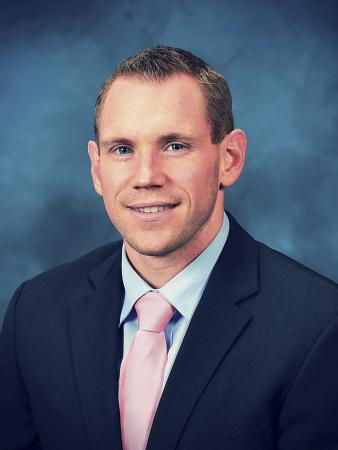
Elijah Martin
Elijah Martin
Oak Ridge National Laboratory
Friday, February 8, 2019
3:00pm
Abstract: External plasma heating and current drive systems are vital for magnetically confined fusion devices. These systems rely on exciting wave electric fields (10’s MHz to 100’s GHz) near the scrape off layer by use of an antenna or waveguide structure. Ion Cyclotron (IC), Lower Hybrid (LH), and Electron Cyclotron (EC) range of frequency waves have been quite successfully in fulfilling their purpose, however, each scheme has experienced its own unique issues stemming from parasitic interactions with the edge plasma. In an effort to identify the underlying physics and provide a path towards mitigation, a diagnostic capable of directly measuring the electric field vector using dynamic Stark spectroscopy was developed. When companioned with first principles kinetic and/or full-wave modeling this diagnostic provides powerful insight into the behavior of waves with the edge plasma. Dynamic Stark spectroscopy is based on spectral measurements of hydrogen-like electronic transitions, typically Dß, using either passive or active techniques. The electric field vector is determined from the shape of the spectral line profile through a systematic fit to the Schrödinger equation. In this seminar, the diagnostic and associated experimental results obtained from an RF sheath test stand (IC), Tore Supra (LH) and Alcator C-Mod (LH) will be presented. Future diagnostic plans for the RF sheath test stand (IC), WEST (LH) and DIII-D (LH and EC) will be discussed.
Bio: Elijah Martin has a background as an experimental plasma physicist (Ph.D., North Carolina State University 2014). Upon graduation, he accepted a postdoctoral fellowship administered by the US DOE Fusion Energy Postdoctoral Research Program. The fellowship was carried out at ORNL, where he developed a laser-based spectroscopic diagnostic to measure plasma parameters, electric fields, and magnetic fields. At present, he is an R&D associate in the Fusion and Materials for Nuclear Systems Division at ORNL. His research within magnetic fusion energy is focused on direct experimental measurement of electric and magnetic field vectors in the plasma edge using passive and active spectroscopic techniques. As fundamental variables dictating heating and current drive, equilibrium, and confinement, these measurements provide a powerful diagnostic for understanding plasma physics when companioned with numerical simulations. Using passive dynamic Stark spectroscopy (DSS), his current efforts are directed toward understanding the interaction of electron cyclotron and lower hybrid wave fields with the turbulent plasma edge. In the Laser Spectroscopy and Quantum Sensing Laboratory at ORNL, Elijah is in the final development stage to realize active laser-based spectroscopic techniques as the next generation diagnostic for electric and magnetic field vector measurements. Doppler free saturation spectroscopy is at the forefront, providing a highly 3D-localized measurement having a field resolution capability of less than 10 V/cm and 5 Gauss.